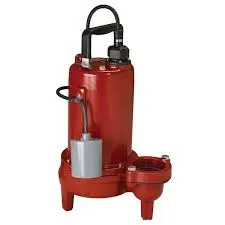Sindhi
- Afrikaans
- Albanian
- Amharic
- Arabic
- Armenian
- Azerbaijani
- Basque
- Belarusian
- Bengali
- Bosnian
- Bulgarian
- Catalan
- Cebuano
- Corsican
- Croatian
- Czech
- Danish
- Dutch
- English
- Esperanto
- Estonian
- Finnish
- French
- Frisian
- Galician
- Georgian
- German
- Greek
- Gujarati
- Haitian Creole
- hausa
- hawaiian
- Hebrew
- Hindi
- Miao
- Hungarian
- Icelandic
- igbo
- Indonesian
- irish
- Italian
- Japanese
- Javanese
- Kannada
- kazakh
- Khmer
- Rwandese
- Korean
- Kurdish
- Kyrgyz
- Lao
- Latin
- Latvian
- Lithuanian
- Luxembourgish
- Macedonian
- Malgashi
- Malay
- Malayalam
- Maltese
- Maori
- Marathi
- Mongolian
- Myanmar
- Nepali
- Norwegian
- Norwegian
- Occitan
- Pashto
- Persian
- Polish
- Portuguese
- Punjabi
- Romanian
- Russian
- Samoan
- Scottish Gaelic
- Serbian
- Sesotho
- Shona
- Sindhi
- Sinhala
- Slovak
- Slovenian
- Somali
- Spanish
- Sundanese
- Swahili
- Swedish
- Tagalog
- Tajik
- Tamil
- Tatar
- Telugu
- Thai
- Turkish
- Turkmen
- Ukrainian
- Urdu
- Uighur
- Uzbek
- Vietnamese
- Welsh
- Bantu
- Yiddish
- Yoruba
- Zulu
Telephone: +86 13120555503
Email: frank@cypump.com
Oct . 05, 2024 20:51 Back to list
Effective Strategies for Optimizing Pipeline Pumping Efficiency in Industrial Applications
Understanding Pipeline Pumping A Critical Component of Modern Infrastructure
Pipeline pumping plays a pivotal role in the transportation of fluids across various industries, including oil and gas, water supply, and chemical manufacturing. This process involves using pumps to move fluids through pipelines, overcoming resistance due to friction and elevation changes. As a critical component of modern infrastructure, pipeline pumping is essential for ensuring the efficient and safe movement of resources.
The Mechanism of Pipeline Pumping
At its core, pipeline pumping relies on the principles of fluid dynamics. Pumps are designed to convert mechanical energy into hydraulic energy, facilitating the movement of liquids through a system of pipes. There are various types of pumps used in pipeline pumping, including centrifugal pumps and positive displacement pumps. Centrifugal pumps are widely used due to their efficiency and ability to handle a large volume of fluid, whereas positive displacement pumps are preferred in scenarios requiring precise control over flow rates.
Each type of pump has its advantages and limitations, and the selection often depends on factors such as the nature of the fluid, required flow rates, and operational conditions. For instance, in oil and gas transportation, centrifugal pumps are commonly employed due to their ability to handle the high volumes and varying viscosities of crude oil.
Challenges in Pipeline Pumping
While pipeline pumping is integral to fluid transport, it is not without challenges. One major concern is ensuring the integrity and safety of the pipelines. Over time, pipelines can wear down, leading to leaks or ruptures. Therefore, regular maintenance and monitoring are essential. Technologies such as smart sensors and IoT devices are increasingly being integrated into pipeline systems to detect anomalies in real-time, allowing for proactive maintenance and reducing the risk of environmental disasters.
pipeline pumping

Another challenge is the energy consumption associated with pumping. Pumps can be energy-intensive, contributing significantly to operational costs. To mitigate this, companies are exploring more energy-efficient technologies and practices. For instance, variable frequency drives (VFDs) help optimize pump operations by adjusting the motor speed according to demand, thereby saving energy and reducing costs.
The Future of Pipeline Pumping
As industries evolve and the demand for efficient resource transportation increases, the future of pipeline pumping is poised for innovation. The integration of advanced technologies, including artificial intelligence and machine learning, promises to enhance operational efficiency. Predictive analytics can be employed to forecast maintenance needs, thereby minimizing downtime and extending the lifespan of pumping systems.
Additionally, sustainability is becoming a central focus in pipeline pumping. Companies are investing in renewable energy sources to power their pumps and exploring biodegradable lubricants to minimize environmental impact. These efforts not only address regulatory requirements but also respond to the growing demand from consumers and stakeholders for environmentally responsible practices.
Conclusion
Pipeline pumping is an essential aspect of modern infrastructure, providing the backbone for fluid transportation across various industries. While challenges exist, advancements in technology and a focus on sustainability are paving the way for a more efficient and environmentally friendly future. By embracing these changes, industries can ensure that pipeline pumping systems remain reliable, safe, and sustainable for years to come.
-
ISG Series Vertical Pipeline Pump - Chi Yuan Pumps Co., LTD.|High Efficiency, Energy Saving, Low Noise
NewsJul.30,2025
-
ISG Series Vertical Pipeline Pump- Chi Yuan Pumps|High Efficiency&Low Noise
NewsJul.30,2025
-
ISG Series Vertical Pipeline Pump-Chi Yuan Pumps Co., LTD.|High Efficiency&Energy Conservation
NewsJul.30,2025
-
ISG Series Vertical Pipeline Pump - Chi Yuan Pumps Co., LTD.|Advanced Hydraulic Design&Energy-Efficient Solutions
NewsJul.30,2025
-
ISG Series Vertical Pipeline Pump - Chi Yuan Pumps Co., LTD.
NewsJul.30,2025
-
ISG Series Vertical Pipeline Pump - Chi Yuan Pumps Co., LTD.|energy-efficient fluid handling&industrial durability
NewsJul.30,2025










